Not even the need to stretch distracted this female kingfisher from her concentration on the pond in front of her.
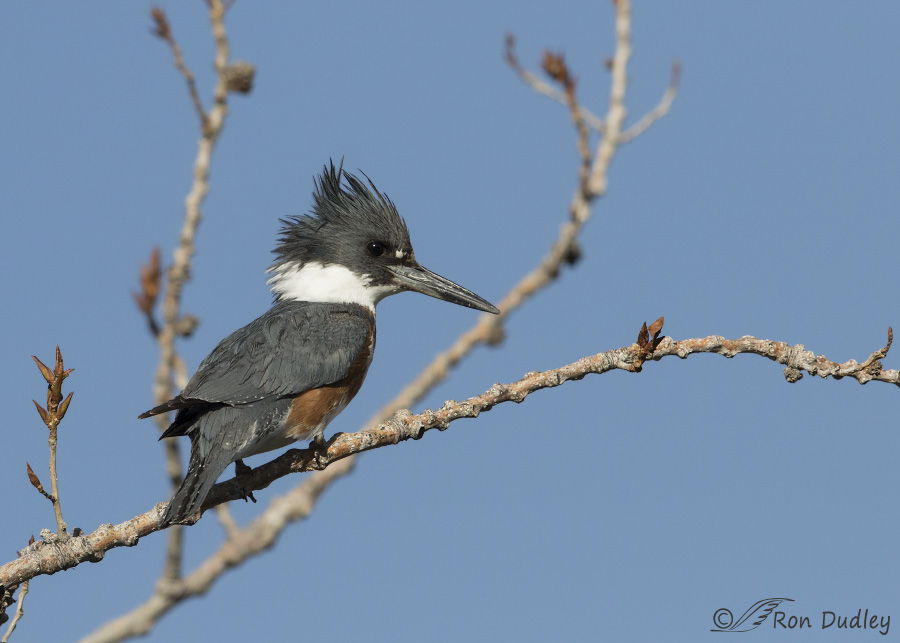
1/3200, f/6.3, ISO 400, Canon 7D Mark II, Canon EF 500mm f/4L IS II USM + 1.4, not baited, set up or called in
I photographed her 5 days ago near the Jordan River as she was fishing above a small pond. When I snapped this photo she had already maintained this exact pose for some time as she stared intently at the water’s surface below and in front of her. She had a favorite spot on the pond she liked to fish and I believe she was looking right at it.
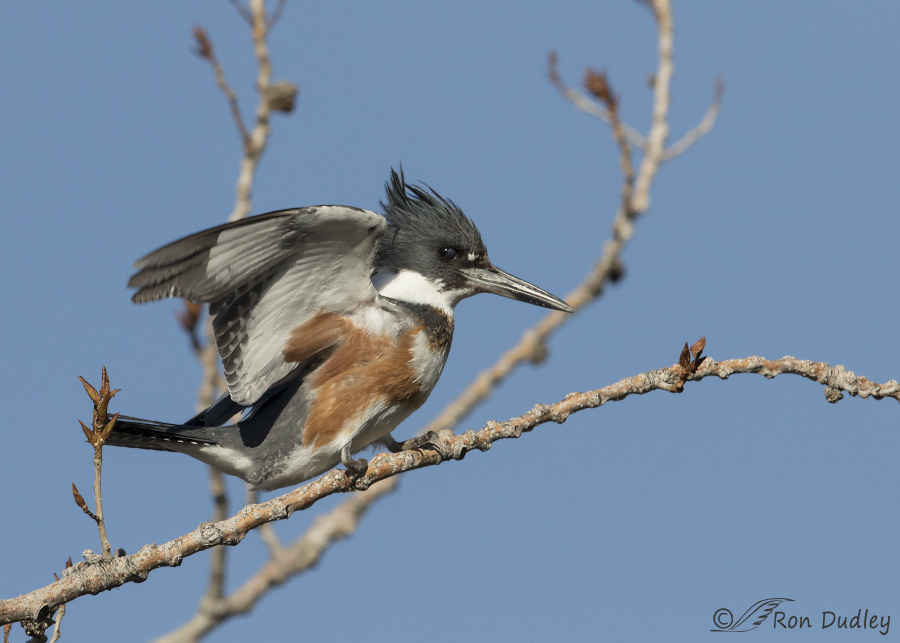
1/4000, f/6.3, ISO 400, Canon 7D Mark II, Canon EF 500mm f/4L IS II USM + 1.4, not baited, set up or called in
Even when a sudden urge to stretch came upon her as she was turning on the perch she seemed to continue staring at that same area of the pond. In this image her nictitating membrane is partially closed which might make her direction of focus slightly less obvious but in the next shot in the burst…
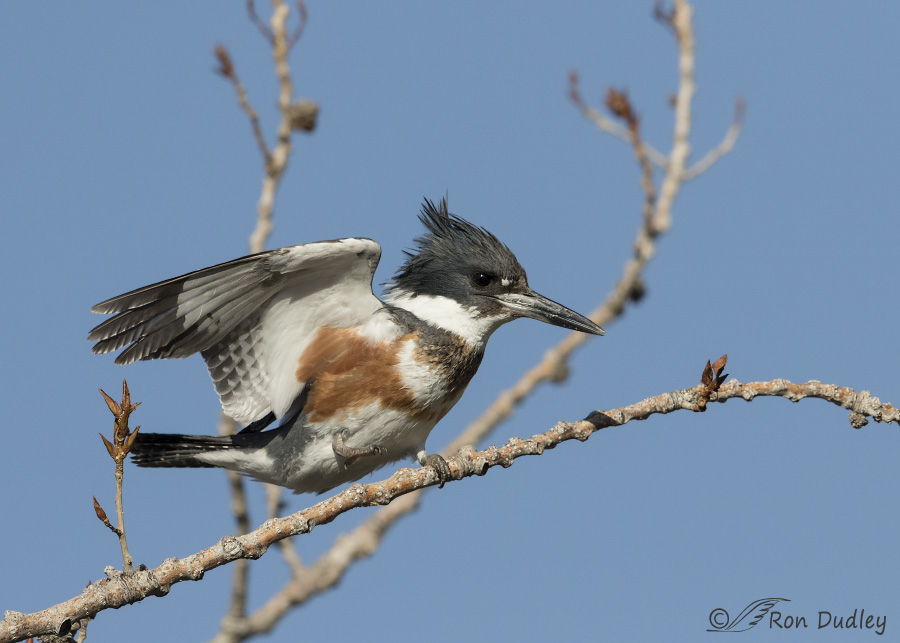
1/3200, f/6.3, ISO 400, Canon 7D Mark II, Canon EF 500mm f/4L IS II USM + 1.4, not baited, set up or called in
it seems fairly obvious to me that she is continuing to look intently at that same small area on the pond as she stretches her right wing and lifts her stubby right leg and foot off the perch.
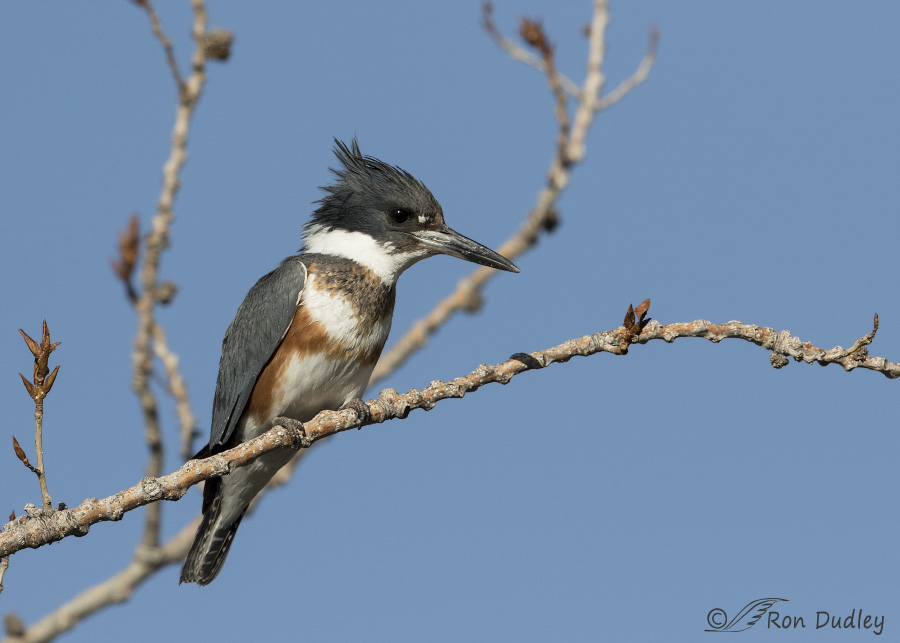
1/4000, f/6.3, ISO 400, Canon 7D Mark II, Canon EF 500mm f/4L IS II USM + 1.4, not baited, set up or called in
When the stretch was over she apparently continued to stare at the same spot. That’s concentration!
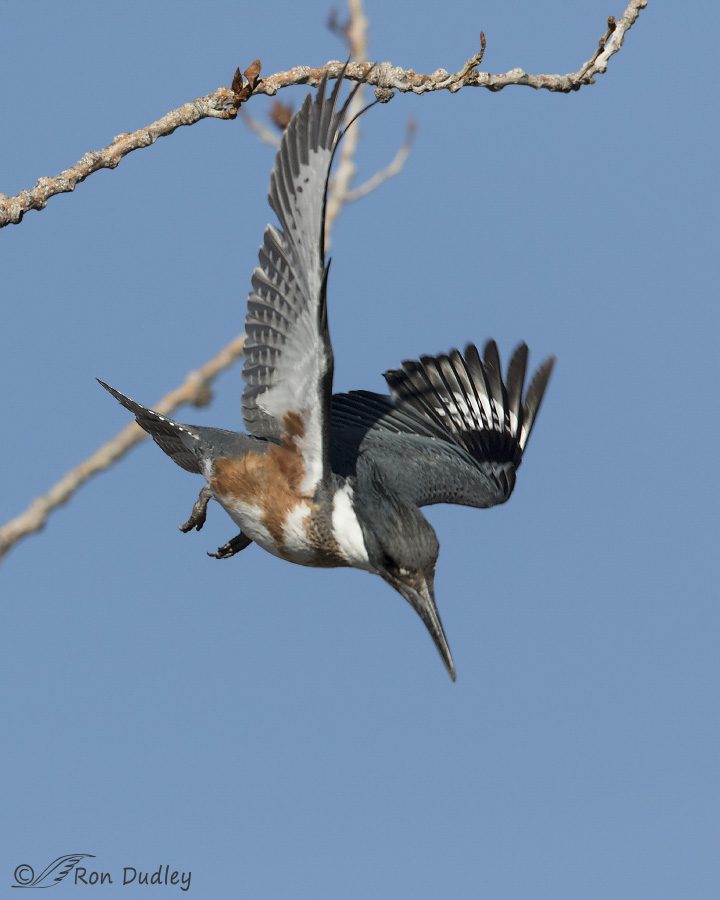
1/3200, f/6.3, ISO 400, Canon 7D Mark II, Canon EF 500mm f/4L IS II USM + 1.4, not baited, set up or called in
But when she eventually did dive on a fish it was to an area closer to her on the pond’s surface than the spot she’d been staring at. And if I remember correctly, this time she missed the fish. Even though the bird is soft in this image I decided to include it to help finish telling the story.
While I was preparing this post something interesting in the second image caught my eye. Before scrolling further I suggest that you go back and look at it again – do you see it?
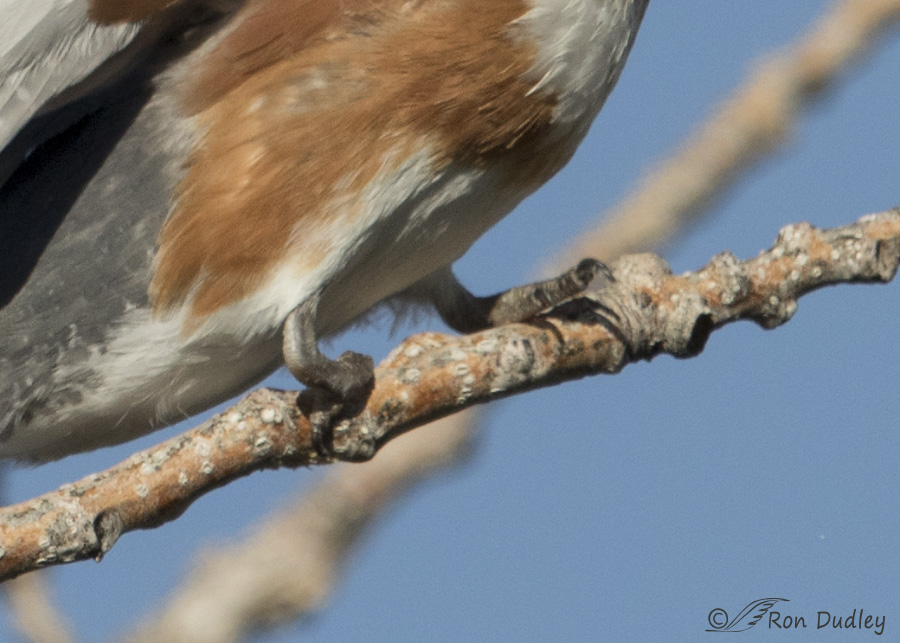
A very large crop makes it more obvious. Her right foot and leg are turned at an odd and uncomfortable-looking angle that I’ve never noticed on a bird before. I suspect that’s why her foot is raised in the third shot as she realigned her foot on the branch after she turned on the perch.
No big deal I guess but I didn’t even know that birds could do that.
Ron


Sorry I am so late. I have become a night owl from watching owls so much at night. I love these photos and I am falling in love with this little Kingfisher. Thank you Ron.
Absolutely awesome shots Ron!!
Charlotte
I have enjoyed your photos and relationship with the Kingfisher, the photos are amazing. Yes I did notice the foot and thought oh no bad foot, but then as I read on you said she was turning so I thought your image caught her before she realigned her foot. I have seen other birds do that, but mostly parrots.
I didn’t think of parrots, April. If any bird would do this regularly it would make sense that it’d be parrots.
Try zooming in on the first photo and look at the foot. I think she pivoted her body and leg at the hip and the metatarsals are in the same place as before she pivoted. What we are seeing is the hallux or back toe facing us and the other digits are still facing forward on the branch.
I’m pretty sure that’s exactly what happened, April.
Sadly I suspect that she NEEDS that concentration. You snooze you lose.
Love this multi-tasking sequence and am intrigued by her foot pose. It looks truly uncomfortable, but no doubt has a purpose.
EC, when it comes to their feet/legs the thing I wonder about most is why their legs are so stubby – what kinds of selection pressures would account for that? It’s fun to ponder…
She’s a sassy looking little lady…with laser vision. I think she skewers her prey with her eyes before she even dives! You’re getting some incredible captures of this usually elusive bird!!! I am really enjoying them all…(I listened to the Chukar tape yesterday, a couple of times, and I just couldn’t figure out what it was laughing about)…
That fifth shot, where she’s diving, is wonderful!
“with laser vision”
wouldn’t it be interesting to know how well they can REALLY see, Patty? And I wonder if they compensate for diffraction when they “aim” for the fish under the surface. Bet they do…
I love every post of yours, but these kingfishers are special. The foot position is interesting and it makes me wonder about the innards of birds’ feet. That is a neat trick, probably necessary – for something.
Have a great week of “shooting!”
A neat trick indeed, Jane!
Interesting! I noticed it, but really didn’t think about it! Great shots, Ron. She’s been a treasure for you(and us)!
“She’s been a treasure for you(and us)! ”
Yes, she certainly has, Judy. I’m disappointed that now she has apparently left the area but at least I had the time with her I did.
Oh MY! What a glorious series of shots! I noticed the foot position the first time through and wondered what what going on there. But that’s tempered with the continual question, how do they DO that?
“how do they DO that?”
A question some of us ask again and again, don’t we, Laura?
Yep, and its ugly sister, what’s WRONG with some humans? Sigh…
Ron, do you think that double-jointed stance gives her more stability if sudden winds arise, or wouldn’t that ‘opposing grasp’ make much difference?
I don’t know for sure, Allison but I believe this “opposing grasps” pose was only held for an instant after she had turned on her perch. That she could do it at all surprised me.
Great shots Ron. One would think that Kingfishers have got to be double-jointed considering that shot.
Focus on a possible prey (livelihood) means survival and this gal looks like she certainly has benefited from that attention.
“One would think that Kingfishers have got to be double-jointed considering that shot”
It does make one wonder, doesn’t it, Dick?
Do you think the shape of the feet, the possible double jointedness of the leg has to do with the fact that they nest in a river bank and the burrow can be fairly narrow? Turning around in a long narrow burrow is probably difficult if you didn’t have any flexibility.
That’s exactly what I think, Dick – they have stubby legs because of the tight confines of the burrow. And they don’t need longer feet to catch food with like Burrowing Owls do.
But what do I know…
I noticed that’s what happened as she took one step forward on the branch. Great catch on your part!!
Thanks, Dan. There’s always something interesting to see out there with birds.